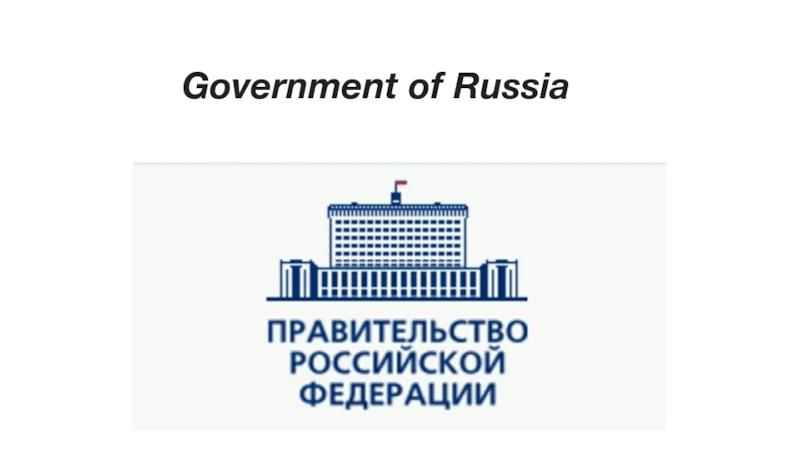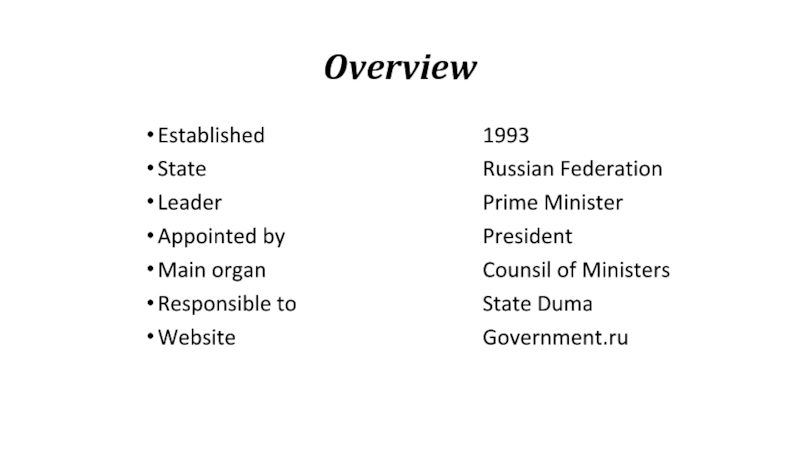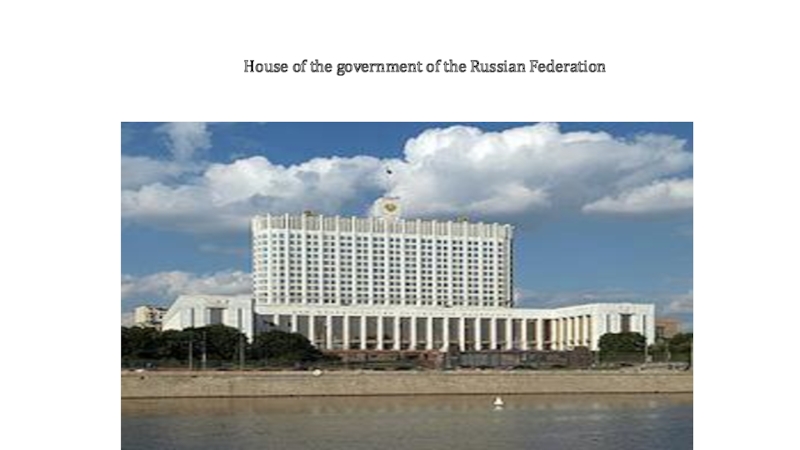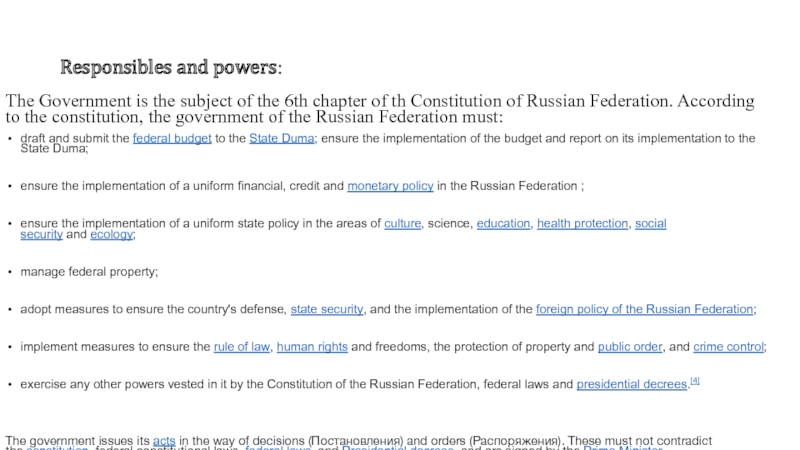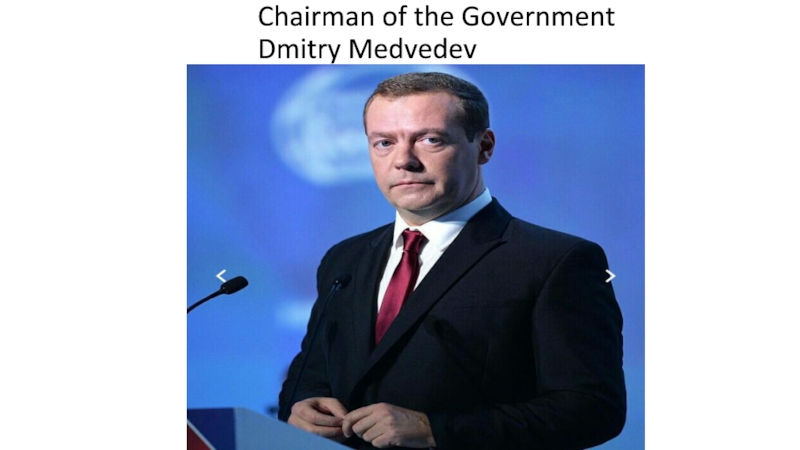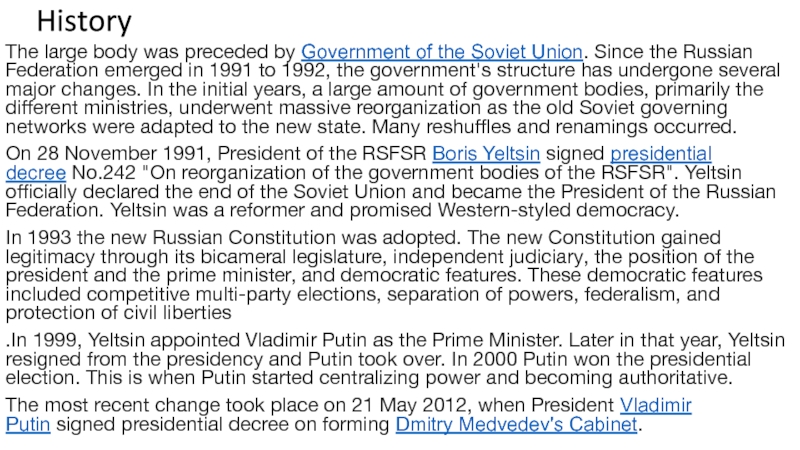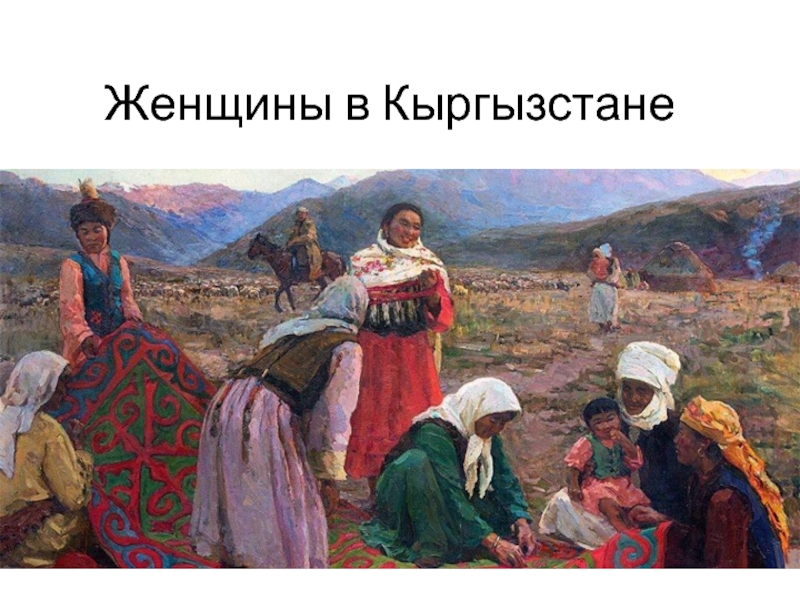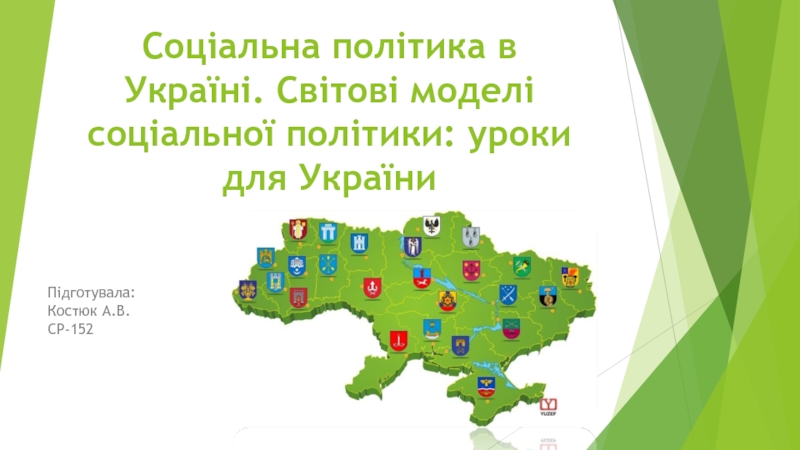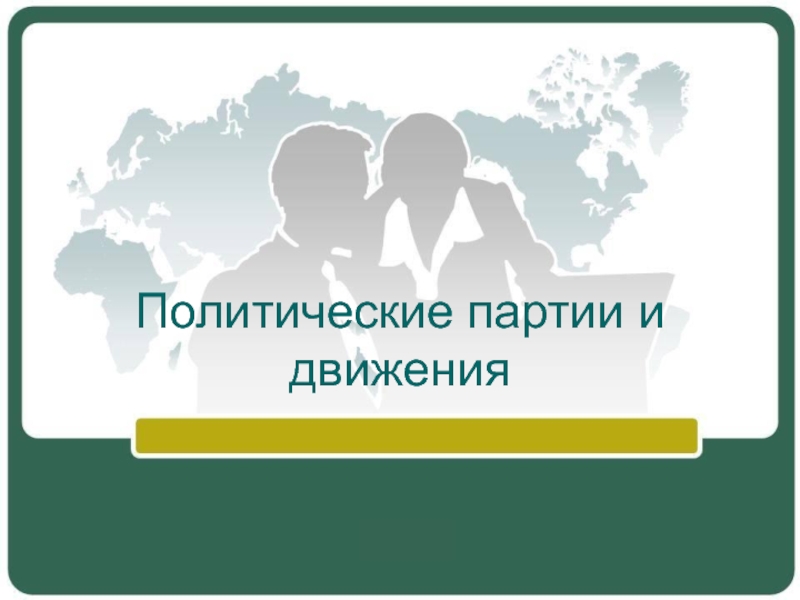- Главная
- Разное
- Дизайн
- Бизнес и предпринимательство
- Аналитика
- Образование
- Развлечения
- Красота и здоровье
- Финансы
- Государство
- Путешествия
- Спорт
- Недвижимость
- Армия
- Графика
- Культурология
- Еда и кулинария
- Лингвистика
- Английский язык
- Астрономия
- Алгебра
- Биология
- География
- Детские презентации
- Информатика
- История
- Литература
- Маркетинг
- Математика
- Медицина
- Менеджмент
- Музыка
- МХК
- Немецкий язык
- ОБЖ
- Обществознание
- Окружающий мир
- Педагогика
- Русский язык
- Технология
- Физика
- Философия
- Химия
- Шаблоны, картинки для презентаций
- Экология
- Экономика
- Юриспруденция
Government of Russia презентация
Содержание
Слайд 2Overview
Established
State
Leader
Appointed by
Main organ
Responsible to
Website
1993
Russian Federation
Prime Minister
President
Counsil of Ministers
State Duma
Government.ru
Слайд 4Responsibles and powers:
The Government is the subject of the 6th chapter
of th Constitution of Russian Federation. According to the constitution, the government of the Russian Federation must:
draft and submit the federal budget to the State Duma; ensure the implementation of the budget and report on its implementation to the State Duma;
ensure the implementation of a uniform financial, credit and monetary policy in the Russian Federation ;
ensure the implementation of a uniform state policy in the areas of culture, science, education, health protection, social security and ecology;
manage federal property;
adopt measures to ensure the country's defense, state security, and the implementation of the foreign policy of the Russian Federation;
implement measures to ensure the rule of law, human rights and freedoms, the protection of property and public order, and crime control;
exercise any other powers vested in it by the Constitution of the Russian Federation, federal laws and presidential decrees.[4]
The government issues its acts in the way of decisions (Постановления) and orders (Распоряжения). These must not contradict the constitution, federal constitutional laws, federal laws, and Presidential decrees, and are signed by the Prime Minister.
draft and submit the federal budget to the State Duma; ensure the implementation of the budget and report on its implementation to the State Duma;
ensure the implementation of a uniform financial, credit and monetary policy in the Russian Federation ;
ensure the implementation of a uniform state policy in the areas of culture, science, education, health protection, social security and ecology;
manage federal property;
adopt measures to ensure the country's defense, state security, and the implementation of the foreign policy of the Russian Federation;
implement measures to ensure the rule of law, human rights and freedoms, the protection of property and public order, and crime control;
exercise any other powers vested in it by the Constitution of the Russian Federation, federal laws and presidential decrees.[4]
The government issues its acts in the way of decisions (Постановления) and orders (Распоряжения). These must not contradict the constitution, federal constitutional laws, federal laws, and Presidential decrees, and are signed by the Prime Minister.
Слайд 6History
The large body was preceded by Government of the Soviet Union. Since
the Russian Federation emerged in 1991 to 1992, the government's structure has undergone several major changes. In the initial years, a large amount of government bodies, primarily the different ministries, underwent massive reorganization as the old Soviet governing networks were adapted to the new state. Many reshuffles and renamings occurred.
On 28 November 1991, President of the RSFSR Boris Yeltsin signed presidential decree No.242 "On reorganization of the government bodies of the RSFSR". Yeltsin officially declared the end of the Soviet Union and became the President of the Russian Federation. Yeltsin was a reformer and promised Western-styled democracy.
In 1993 the new Russian Constitution was adopted. The new Constitution gained legitimacy through its bicameral legislature, independent judiciary, the position of the president and the prime minister, and democratic features. These democratic features included competitive multi-party elections, separation of powers, federalism, and protection of civil liberties
.In 1999, Yeltsin appointed Vladimir Putin as the Prime Minister. Later in that year, Yeltsin resigned from the presidency and Putin took over. In 2000 Putin won the presidential election. This is when Putin started centralizing power and becoming authoritative.
The most recent change took place on 21 May 2012, when President Vladimir Putin signed presidential decree on forming Dmitry Medvedev's Cabinet.
On 28 November 1991, President of the RSFSR Boris Yeltsin signed presidential decree No.242 "On reorganization of the government bodies of the RSFSR". Yeltsin officially declared the end of the Soviet Union and became the President of the Russian Federation. Yeltsin was a reformer and promised Western-styled democracy.
In 1993 the new Russian Constitution was adopted. The new Constitution gained legitimacy through its bicameral legislature, independent judiciary, the position of the president and the prime minister, and democratic features. These democratic features included competitive multi-party elections, separation of powers, federalism, and protection of civil liberties
.In 1999, Yeltsin appointed Vladimir Putin as the Prime Minister. Later in that year, Yeltsin resigned from the presidency and Putin took over. In 2000 Putin won the presidential election. This is when Putin started centralizing power and becoming authoritative.
The most recent change took place on 21 May 2012, when President Vladimir Putin signed presidential decree on forming Dmitry Medvedev's Cabinet.
